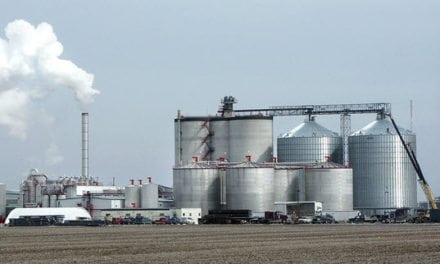Oil Prices Hold Support
- Oil prices are holding support despite a more geopolitically bearish situation.
- Euro-zone economic growth has stalled. Libyan exports have now resumed.
- Crude oil inputs to refineries rose to a record 16.4 million barrels daily during the week ending August 15.
- Natural gas injections to underground storage have been at rates higher than last year and against the average of the past five years. This, and cool weather have pressed natural gas futures prices into support.
Sincerely,
Alan Levine
Chairman, Powerhouse
The Matrix
Oil prices have eased toward support but have not broken those levels despite a more bearish geopolitical situation. Brent has reached a 13-month low and WTI found support at $92.50.
Explanations are rife for both demand and supply. Economic recovery in Europe has stalled. The Euro-zone gross domestic product during the second quarter was unchanged from the first quarter. And supply expectations have been bolstered by exports from Libya.
Petroleum product futures were under pressure as well. RBOB reached $2.70 early last week, a price not seen since early in February. And ULSD tested support at $2.80. Both products have since rallied a bit. The low in distillate fuel prices was not matched by new lows in the Relative Strength Index, an important indicator of price trends. This divergence could indicate a rally in the weeks ahead. And of course, this would be consistent with seasonal expectations.
One analyst put it, “The crude market is oversupplied…There’s plenty of crude throughout the Atlantic basin and demand just isn’t that strong. Supplies have been ample in the U.S. and are now comfortable elsewhere as well.”
Supply/Demand Balances
Supply/demand data in the United States for the week ending August 15, 2014 were released by the Energy Information Administration.
Total commercial stocks of petroleum declined, losing 0.7 million net barrels during the report week. Crude oil declines accounted for 4.5 million barrels. Distillate fuel oil lost another million barrels. Gains were largely experienced in gasoline and fuel ethanol. Total supplies now stand at 1.122 billion barrels of oil. Current supply of all oils has moved ahead of last year by 4.2 million barrels.
Commercial crude oil stocks fell 4.5 million barrels to 362.5 million barrels during the report week. This draw renews the reduction of supplies that began in early May when crude oil stocks were at 397.6 million barrels. Stocks are less than two million barrels higher than they were at the start of 2014 and 3.5 million barrels higher than last year at this time. The failure to build stocks reflects the high intensity of refinery demand for crude oil now a feature of the market.
Most of the decline occurred on the Gulf Coast where stocks fell 5.5 million barrels. Stocks at Cushing, OK were up 1.4 million barrels, moving to 20.2 million barrels.
Crude oil imports declined 387,000 barrels daily during the report week, averaging 7.5 million barrels daily. Imports are down 4.2 per cent from the same four-week period last year.
U.S. crude oil production reached 8.6 million barrels a day according to the latest report. Alaskan production has reached 395 thousand barrels daily.
Refinery utilization rates recovered to 93.4 percent. Regional utilization rose everhywhere except in the Rocky Mountains. On the West Coast rates rose 1.1percentage points to 85.1 per cent. The largest increase was on the Gulf Coast where refinery rates added 2.5 percentage points. Gulf Coast refineries ran at 96.9 per cent.
Crude oil inputs to refineries rose to 16.4 million barrels per day during the report week. Gulf Coast facilities ran 8.7 million barrels of crude oil daily at that time. This is a record level of crude oil use, with data available back to 1981.
Gasoline production fell 366,000 barrels per day. This was consistent with a drop in demand to 8.8 million barrels per day. The four-week average remains just over 9 million barrels per day.
There was a small build in gasoline stocks of 0.6 million barrels to 213.3 million barrels. The increase occurred on the East Coast, PADD 1.
Distillate fuel oil supplies fell 1.0 million barrels during the report week. The declines were seen largely centered on the Gulf Coast (-1.6 million barrels) and in the Midwest (-0.6 million barrels.) Supplies in the U.S. are falling even further below last year’s levels. Distillate stocks now lag last year’s level by 7.8 million barrels. This is inconsistent with the weakness being seen in distillate prices.
Distillate fuel oil demand remains over four million barrels daily. Refinery production of distillate fuels rose to 4.9 million barrels daily.
Propane inventories added another 2.5 million barrels in the U.S. Total stocks are 72.8 million barrels, 10.5 million barrels more than last year at this time. Gulf Coast stocks are 39.9 million barrels, up 1.2 million barrels for the week. Midwest stocks were up 1.1 million barrels. Inventories there are now 24.5 million barrels.
Natural Gas
According to the EIA: The net injection reported for the week ending August 15 was 88 Bcf, 40 Bcf larger than the five-year average net injection of 48 Bcf and 30 Bcf larger than last year’s net injection of 58 Bcf. Working gas inventories totaled 2,555 Bcf, 500 Bcf (16.4%) less than last year at this time and 535 Bcf (17.3%) below the five-year (2009-13) average.
Additions to storage for the total injection period starting during the week ending April 4 have reached 1.7 Tcf. This is much larger than the average injection for these weeks. For the past five years, comparable injections averaged 1.3 Tcf. Moreover, with eleven more weeks left in the traditional injection period, additions will have to average 118 Bcf weekly to match the average injection.
Futures trading involves significant risk and is not suitable for everyone. Transactions in securities futures, commodity and index futures and options on future markets carry a high degree of risk. The amount of initial margin is small relative to the value of the futures contract, meaning that transactions are heavily “leveraged”. A relatively small market movement will have a proportionately larger impact on the funds you have deposited or will have to deposit: this may work against you as well as for you. You may sustain a total loss of initial margin funds and any additional funds deposited with the clearing firm to maintain your position. If the market moves against your position or margin levels are increased, you may be called upon to pay substantial additional funds on short notice to maintain your position. If you fail to comply with a request for additional funds within the time prescribed, your position may be liquidated at a loss and you will be liable for any resulting deficit. Past performance may not be indicative of future results. This is not an offer to invest in any investment program.Vol. PH 03 NO. 34Was this memo helpful? We’d like your feedback.
Please respond to [email protected]
Copyright © 2014 Powerhouse, All rights reserved.












